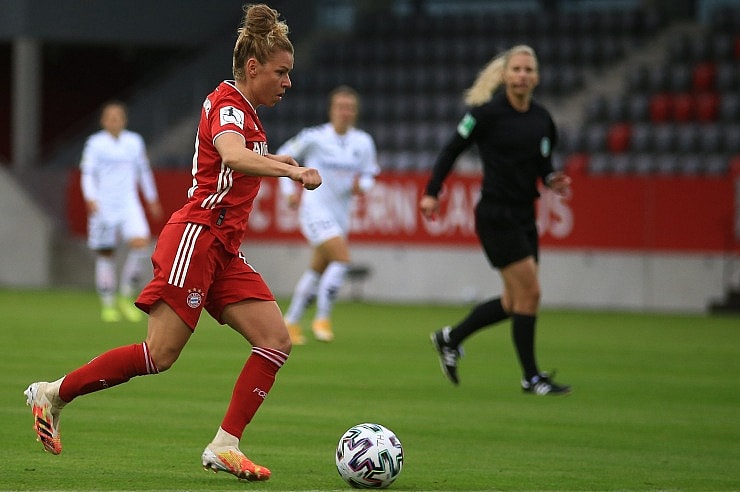
![]()
Predictor Team
Nov 24, 2025
European World Cup 2026 Qualifiers: The Final Round of Games
If you’re excited for the biggest tournament in sport next summer, why not learn more about our World Cup Football Predictor game and take part in the action?
![]() Predictor Team
Predictor Team
Sep 2, 2022

As the popularity of our Women’s World Cup football predictor game shows, women’s football is growing rapidly these days. The Women’s Euros final attracted 20,000 more fans than the men’s equivalent the previous year, and there is great excitement about the forthcoming Women’s World Cup in Australia and New Zealand next year. However, it hasn’t always been that way.
Women’s football gets the red card
Remarkably, women’s football was banned from FA affiliated grounds in December 1921, after a Boxing Day game at Goodison Park attracted a crowd of 53,000. Since the match was played for charity, the FA received no income from the game and had control over how it was run. This upset the establishment who decided to ban the women’s game, claiming that:
“Complaints having been made as to football being played by women. Council felt impelled to express the strong opinion that the game of football is quite unsuitable for females and should not be encouraged.”
To football predictor game players, this might seem like the thinking of a stuffy, bygone era. In fact the FA ban lasted right through to 1970, with a similar ban in Germany, while Brazil banned ladies’ football until as recently as 1979.
The first ‘Women’s World Cup’
With the women’s game banned in many countries, there were no organised women’s football tournaments until 1970. That year, FIEFF (the Federazione Internazionale Europea Football Femminile) held the first unofficial international tournament in Italy, which was won by Denmark.
This event proved so popular that a second tournament, the Campeonato de Fútbol Femenil, was held in Brazil the following year. This was also won by Denmark and was the first tournament to feature an ‘England’ team. The British Independent Ladies team, featuring many players from Chiltern Valley Ladies, finished last in the tournament, but they had started the ball rolling for England Women’s international future.
The Women’s World Cup takes shape
The 1970s and 80s saw a number of smaller international tournaments raising the profile of the women’s game, which finally got the attention of FIFA in 1988. To test if a Women’s World Cup was workable, they held an invitation tournament in China featuring twelve national sides. This tournament was hugely popular, with crowds averaging over 20,000, and the test was deemed to be a success.
The first official FIFA Women’s World Cup took place in China in 1991, with America lifting the trophy. England were not part of this first tournament, entering the competition for the first time in 1995, with the Women’s World Cup in Sweden, where they were knocked out in the quarter finals by Germany.
The modern Women’s World Cup
There have been eight official Women’s World Cup tournaments since 1991, with six countries playing host and 36 nations taking part in the finals. The women’s game has grown significantly in this time, with ninth tournament next year increasing from 24 teams in the finals to 32. Football predictor games now feature the women’s game, and Panini even created a sticker book for the 2011 tournament – the ultimate in football fan recognition.
England have more than qualified for the finals in Australia and New Zealand. Their qualifying record of ten wins from ten, with eighty goals for and zero against, is by far the best of any team, making them amongst the favourites for any football predictor game player. However, France, Spain and Denmark are also unbeaten in qualifying, with Spain also keeping a clean sheet, making football predictor games a tough challenge for even the most well-informed fan.
Take part in the tournament
If you’d like to find out more about the Noise Women’s World Cup Football Predictor Game, and how it can help develop team spirit, improve morale and reward your workforce with some competitive fun, get in touch today. Our team will be happy to explain how the football predictor game can be tailored to your business, with company colours and branding, and even money-making client sponsorship.